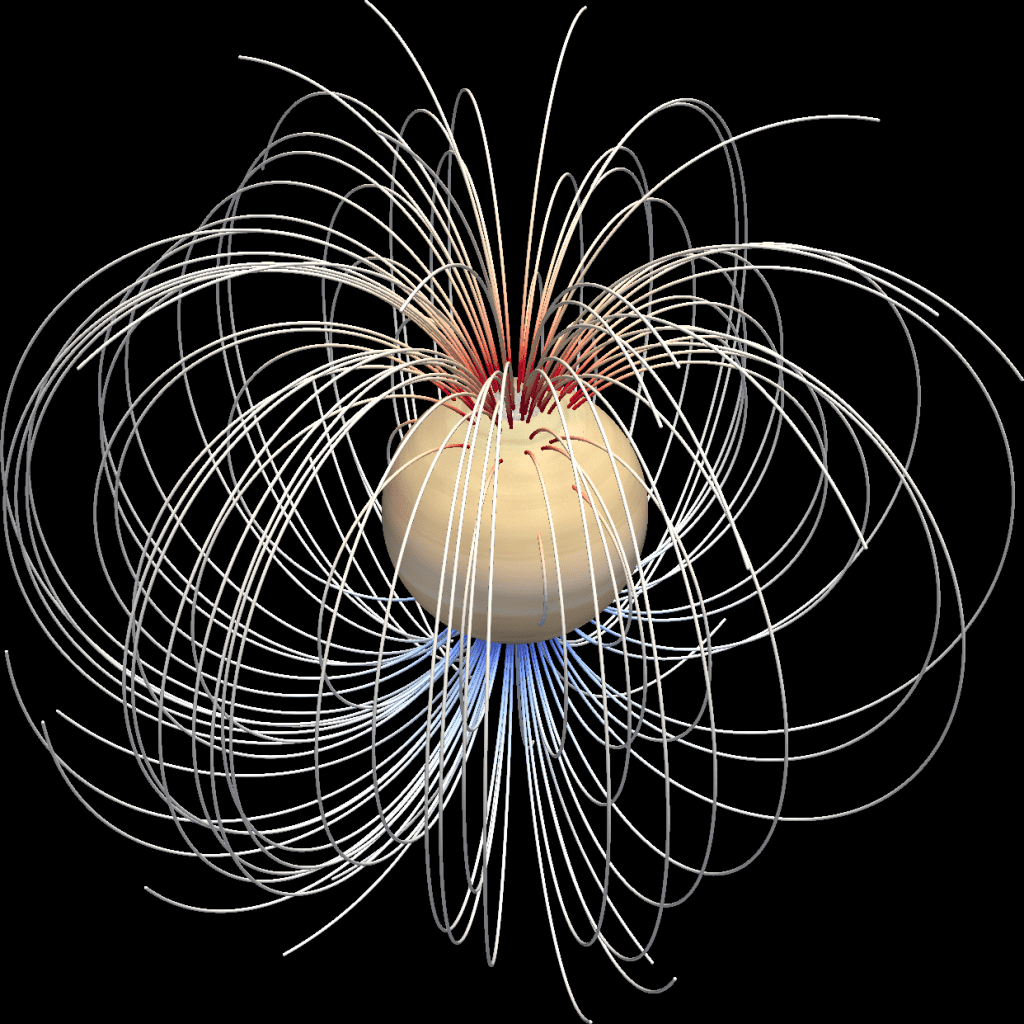Researchers at the Johns Hopkins University have completed a new model of Saturn’s interior, which hints at a thick layer of helium rain that modulates the gas giant’s magnetic field.

The so-called ‘gas giants’ are notoriously hard to peer into, and they remain some of the most mysterious planets out there. Given the extreme environments they represent, it’s likely going to be a while before this changes, and an even longer while before any astronauts can actually go see for themselves.
That doesn’t mean we can’t draw some conclusions based on what we do know, however. And a team from Johns Hopkins University did just that, creating a new digital model looking into Saturn’s interior. This model hints at a temperature difference in the helium rain layer between the planet’s equator (where it is hotter) and the poles (where it gets colder).
Hot waist
“By studying how Saturn formed and how it evolved over time, we can learn a lot about the formation of other planets similar to Saturn within our own solar system, as well as beyond it,” said co-author Sabine Stanley, a Johns Hopkins planetary physicist.
“One thing we discovered was how sensitive the model was to very specific things like temperature,” she adds. “And that means we have a really interesting probe of Saturn’s deep interior as far as 20,000 kilometers down. It’s a kind of X-ray vision.”
Saturn is unique among the other gas giants in that its magnetic field is almost perfectly symmetrical around its axis. Since magnetic fields are generated by structures inside a planet’s body, this tidbit could help us glean some information about Saturn’s interior layout.
Using data recorded by NASA’s Cassini mission, researchers at Johns Hopkins University created detailed computer simulations using software typically employed for weather and climate simulations. The models indicate that there is a heat gradient in Saturn’s interior, with higher temperatures towards the equator. Overall, this could point to the existence of a layer of liquid helium around the planet’s core.

This structure creates a dynamo-like mechanism, which goes on to produce the striking magnetic field recorded around Saturn. On Earth, the planet’s iron core and molten metal mantle play the role of dynamo. It was expected that gas giants rely on a different structure to create their magnetic field, given their different chemical composition and extreme mass, but this is the first study to actually pinpoint one candidate structure for this role in gas giants.
Apart from this, the simulations also suggest that a certain level of non-axisymmetry could be present near Saturn’s north and south poles.
“Even though the observations we have from Saturn look perfectly symmetrical, in our computer simulations we can fully interrogate the field,” said Stanley.
Naturally, until we can put a person on Saturn to check, we can’t confirm these findings. Until then, models will have to suffice.
The paper “Recipe for a Saturn‐Like Dynamo” has been published in the journal AGU Advances.









